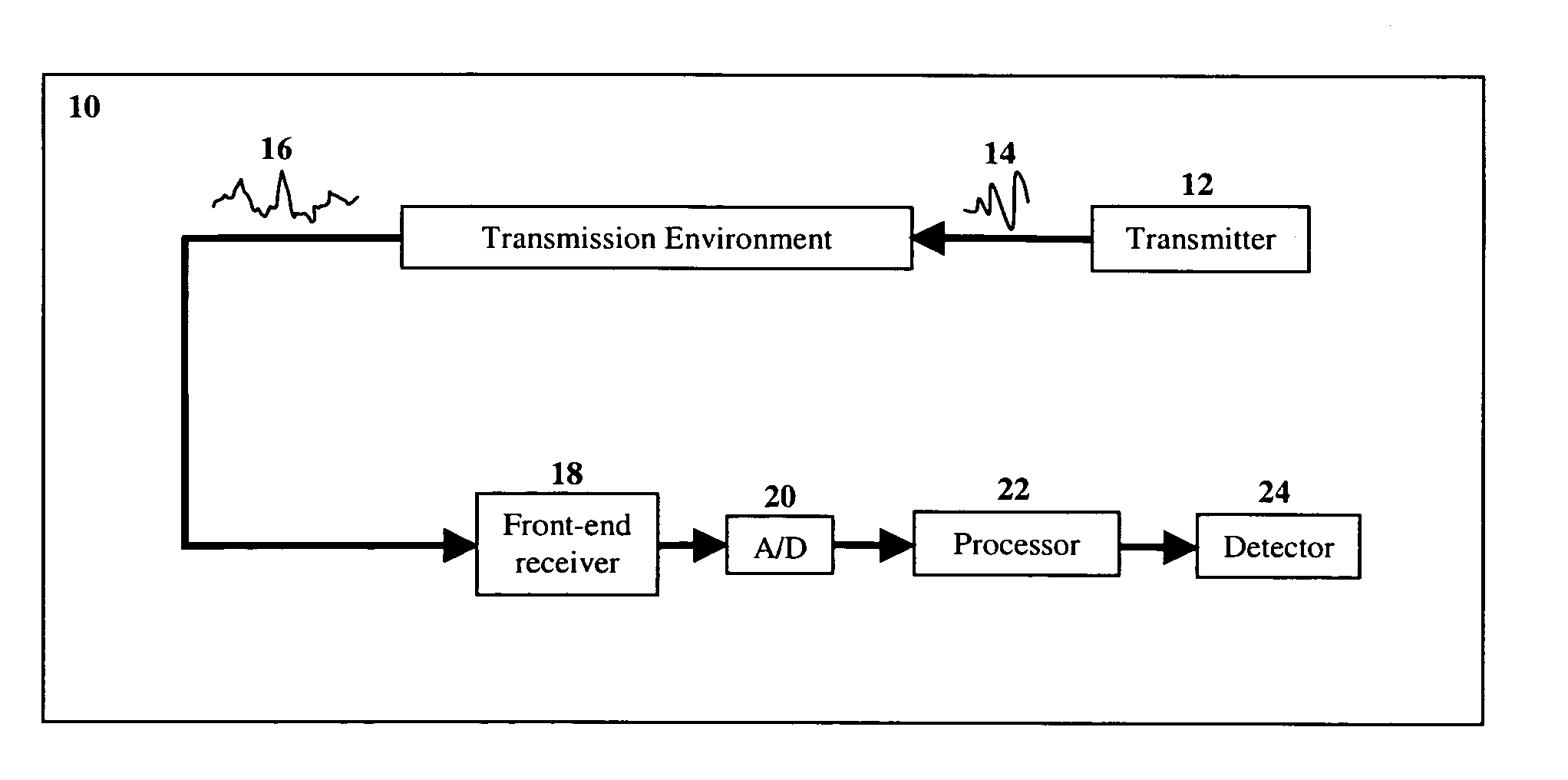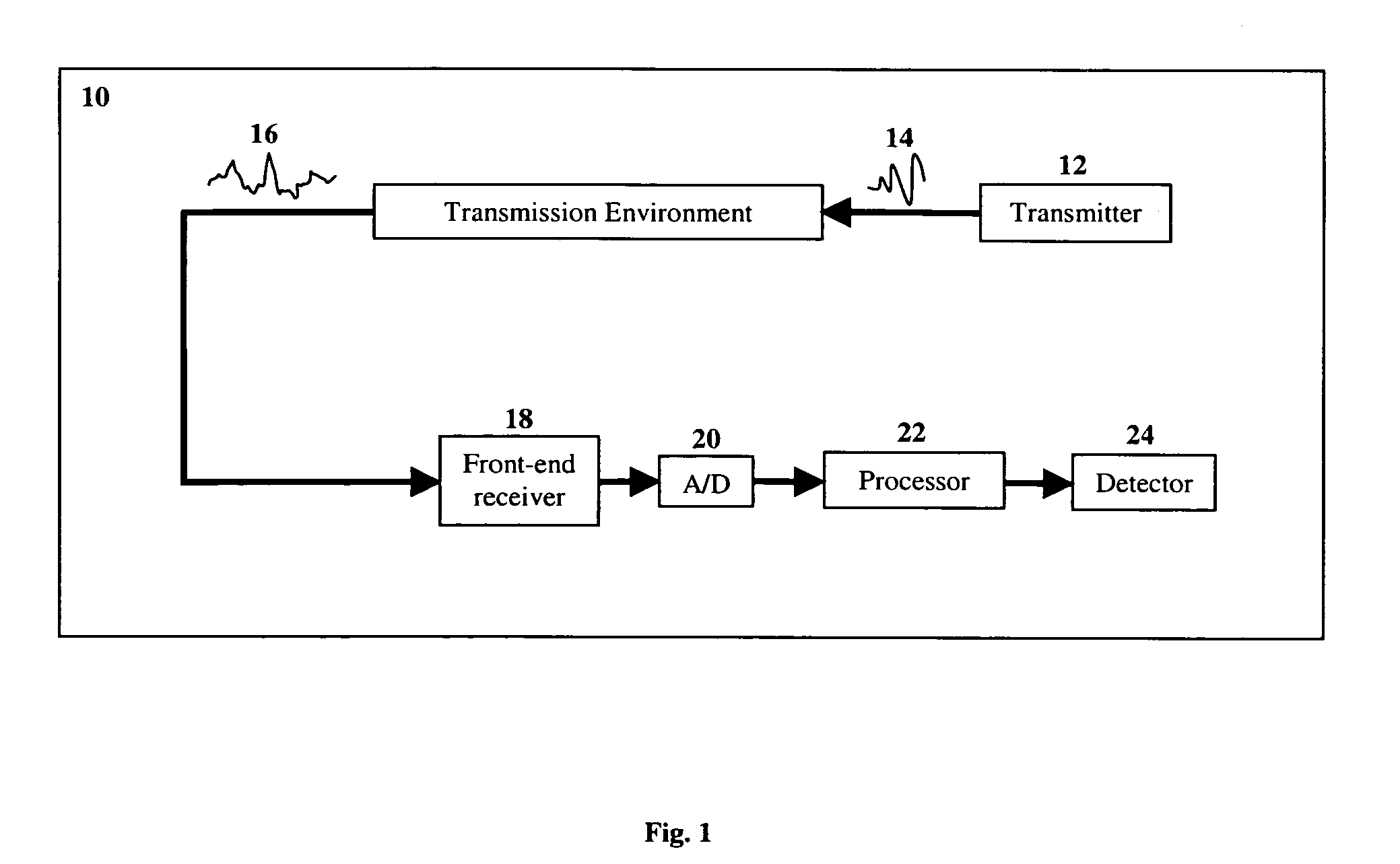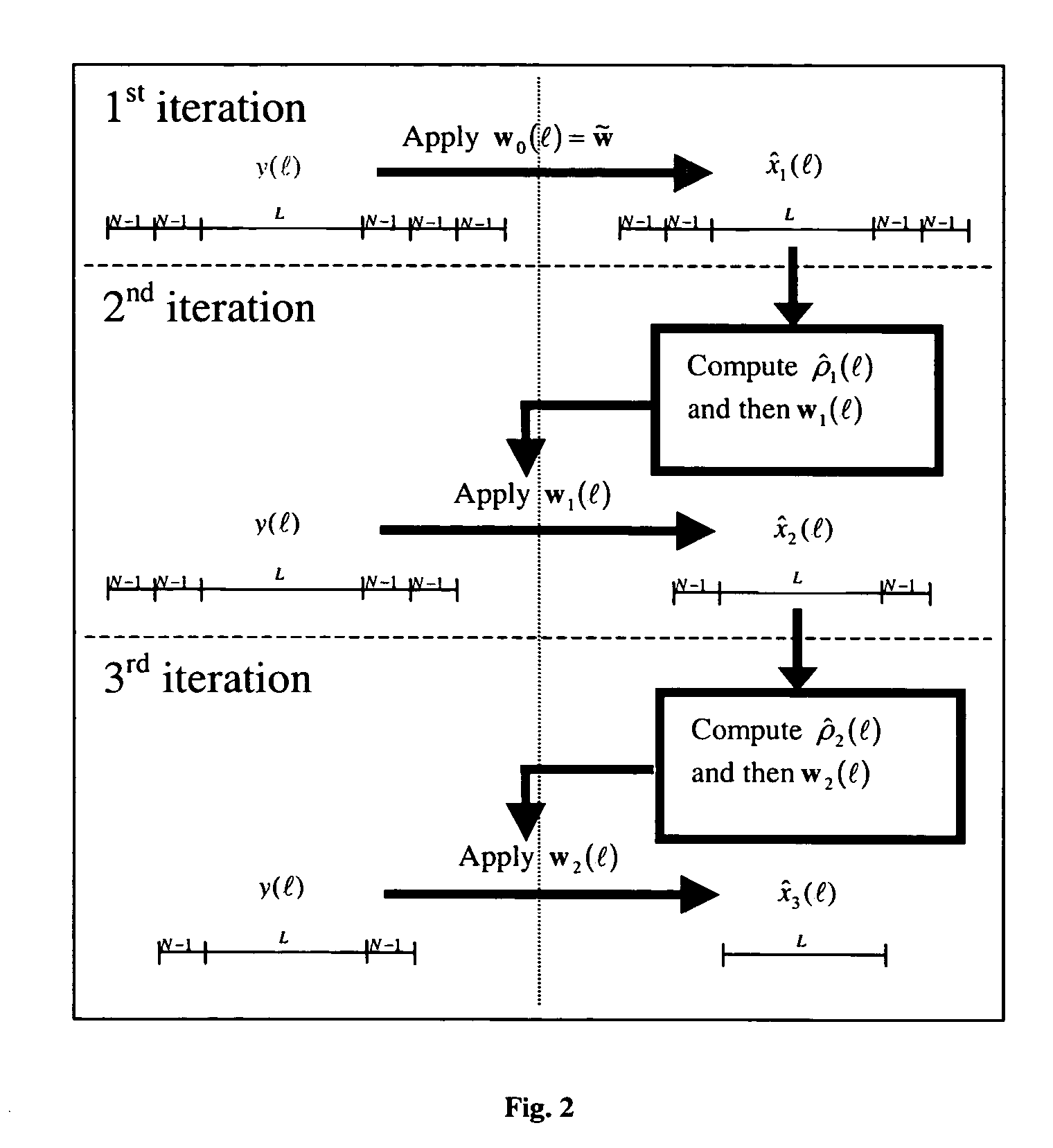Robust predictive deconvolution system and method
- Summary
- Abstract
- Description
- Claims
- Application Information
AI Technical Summary
Benefits of technology
Problems solved by technology
Method used
Image
Examples
Embodiment Construction
Definitions: The term “convolution” means the process that yields the output response of an input to a linear time-invariant system, such as is described and defined in J. G. Proakis and D. G. Manolakis, Digital Signal Processing:Principles, Algorithms, and Applications, 3rd Ed., pp. 75-82, Prentice Hall: Upper Saddle River, N.J. (1996), incorporated herein by reference. The term “deconvolution” as used herein means the process that given the output of a system determines an unknown input signal to the system. See Id. at p. 355, incorporated herein by reference. The term “scatterer” means something in the path of a transmitted waveform that causes a significant reflection (relative to the noise) back to the receiver of the sensor.
Referring now to FIG. 1, a predictive deconvolution system 10 includes a transmitter 12 for transmitting a phase or frequency modulated pulse (or waveform) 14 that, upon interacting with its transmission environment's unknown impulse response 16 (to be e...
PUM
 Login to View More
Login to View More Abstract
Description
Claims
Application Information
 Login to View More
Login to View More - R&D
- Intellectual Property
- Life Sciences
- Materials
- Tech Scout
- Unparalleled Data Quality
- Higher Quality Content
- 60% Fewer Hallucinations
Browse by: Latest US Patents, China's latest patents, Technical Efficacy Thesaurus, Application Domain, Technology Topic, Popular Technical Reports.
© 2025 PatSnap. All rights reserved.Legal|Privacy policy|Modern Slavery Act Transparency Statement|Sitemap|About US| Contact US: help@patsnap.com



